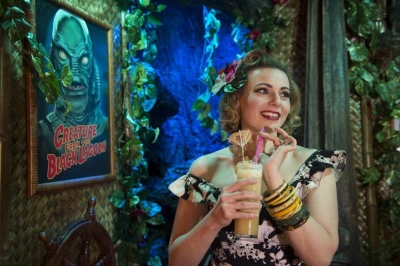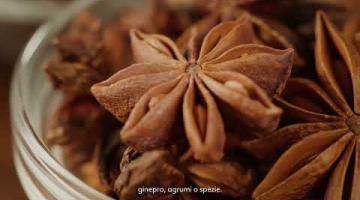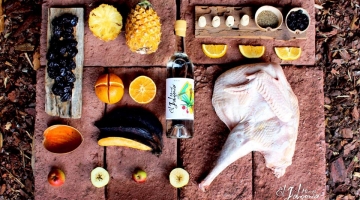The secrets of tiki drinks: How the Zombie came back from the dead
BY ANNE BROCKHOFF
Special to The Star
LINKEDIN
GOOGLE+
PINTEREST
REDDIT
PRINT
ORDER REPRINT OF THIS STORY
There’s a lot to take in at TikiCat, a tiki bar in the basement of Westport’s HopCat. Grass thatching, atmospheric lighting, carved wooden masks, a small waterfall, tropical flowers, Space Age art and other ephemera, layered to look as if it has been there for years, instead of just since April.
With so much to look at, I at first didn’t notice the scattering of laminated cards with TikiCat’s cocktail recipes behind the bar. Right there. In plain view.
OK, that might not seem like a big deal. But considering the secrecy that once shrouded drinks like the Zombie, it shows how far tiki has come.
“Those recipes were valuable trade secrets,” says Jeff “Beachbum” Berry, who has written six books on tiki and owns Latitude 29 in New Orleans. “It was industrial espionage to try to get them.”
Donn Beach (formerly Ernest Raymond Beaumont Gantt) birthed tiki when he opened Don the Beachcomber in Los Angeles after Prohibition’s repeal. Beach’s faux Polynesian style (it wasn’t called tiki until later) was informed by his own South Seas travels, and his Caribbean-inspired “Rhum Rhapsodies” drew both Hollywood stars and imitators.
Beach’s rivals routinely poached his bartenders, so he took to encoding his recipes. A bottle might be marked as Spices #2 or Don’s Mix; bartenders knew how much to use but not the bottle’s contents, according to “Beachbum Berry’s Sippin’ Safari” (SLG Publishing, 2007).
“Donn didn’t let bartenders know what was in his drinks,” says TikiCat’s “tiki ambassador,” Marc Modrow. “He personally made his mixes. When he died, and then other people (who knew the recipes) died, the recipes died, too.”
Well, almost.
Berry grew up eating Cantonese food in L.A.’s tiki destinations with his parents. When he was old enough to drink, Berry returned for the cocktails, only to discover his childhood haunts were closing.
“By the mid-’80s and ’90s, not only had the fad died, but the entire business model collapsed,” Berry told me. “I realized that if I wanted to drink their drinks, I’d have to make them myself.”
Easier said than done.
The hunt for recipes
Berry scoured used-book stores, unearthing treasures like a 1972 bar guide published by Victor Bergeron of Trader Vic’s fame. He collected menus, dug through library collections and browsed microfilm. Berry’s search yielded finds like the Tradewinds, a rum-coconut cream-apricot brandy concoction included in a booklet called “The Jamaican Bartender.”
“It would still be buried there, and nobody would be serving it,” says Berry, who included the recipe in “Taboo Table” (SLG Publishing, 2004) and “Beachbum Berry Remixed” (SLG Publishing, 2009). “Now it’s popping up all over the place.”
Beach never published his recipes, though. So Berry tracked down bartenders who’d worked for him and coaxed them into sharing their stories and secrets. About the same time, he began accumulating copies of bartenders’ little black formula books and, by cross-referencing them, pieced together Beach’s code.
As Berry published his findings and began speaking at events like New Orleans’ Tales of the Cocktail, tiki swept out of enthusiasts’ private basements and onto the main stage.
“The tiki revival couldn’t exist without Beachbum Berry,” says Paul Clarke, author of the “Cocktail Chronicles” (Spring House Press, 2015) and executive editor of Imbibe magazine. “Jeff took it seriously, and that was of critical importance.”
Tiki cocktails appeared on craft bar lists, and tiki bars sprang up in San Francisco, Los Angeles, Chicago, Portland, Seattle, Houston, Tulsa and, now, Kansas City.
“These things are everywhere now in a way they haven’t been for a half a century,” Clarke says. “Tiki may have been the unappreciated or unrespected member of the party 10 years ago. Now it’s their party.”
One of the most lauded bars is Smuggler’s Cove, which Martin and Rebecca Cate opened in San Francisco in 2009. Their eponymous book this year won a James Beard Foundation book award, highlighting tiki’s legitimacy and the Cates’ role in making it so.
“He’s one of the original gangsters,” Garry Boyd, vice president for food, beverage and innovation for BarFly Ventures (TikiCat’s owner), says of Martin Cate.
So Boyd was understandably thrilled when Cate signed on as a consultant for TikiCat. Boyd sent his list of 20 potential cocktails to Cate, who refined them at Smuggler’s Cove before coming to Kansas City to train TikiCat’s staff in drink-making, tiki culture and rum.
FACEBOOK TWITTER EMAIL SHARE
A look inside TikiCat, Kansas City's hottest new bar
Come on a tour as Chow Town Live visits TikiCat, a hot new tiki bar with loads of ambiance, thanks to tiki designer Bamboo Ben. A bartender named Puka Pumba serves up tropical craft cocktails in this secret oasis in the basement of HopCat in Westport.
Tammy Ljungblad and Jill Wendholt Silva The Kansas City Star
A dozen cocktails are classics, like the Mai Tai. Another four are riffs, including the Daylight Come (rum, banana and coconut). The remainder are originals, including Cate’s Donn Day Afternoon (rum, lime juice and cinnamon syrup topped with Stiegl-Radler Grapefruit beer) and the Catbird Seat, which balances Plantation 3 Stars rum, Plantation Rum Original Dark and Coruba Dark Rum with blackberry brandy, orange curaçao, demerara syrup, fresh lemon and lime juices and orange bitters.
It’s a diverse list, and it begs the question: What makes a tiki drink tiki?
Tiki 2.0
Planter’s Punch, that iconic blend of strong, sweet, sour and spice, provides the basic template, Cate told me via email. Tiki blows up that equation to include multiple rums (or other spirits); fresh fruits and juices; orgeat, falernum or other syrups; liqueurs like allspice or pimento dram; bitters; ice that might be in cubes, cracked, crushed or flash blended for 5, 10 or 20 seconds; and all manner of garnishes.
“The trick is to make them both balanced and baroque,” Cate wrote. They “should be complex yet approachable.”
Essential to that complexity is rum, and there’s a growing variety to choose from. A recent browse through Gomer’s midtown location showed rums both young and well-aged from 16 countries, in all manner of expressions: pot-distilled, black, demerara, rhum agricole, spiced and flavored, overproof, blends, cask-finished and single barrel.
If you’re replicating a traditional recipe, it’s best to at least start with the style or origin of rum called for, but that doesn’t mean you can’t experiment. After all, Donn Beach himself was an inveterate tinkerer. And that’s as it should be, TikiCat’s Modrow says.
“Tiki is fluid and dynamic,” he says. “It’s no fun to be stuck in the past.”
Kansas City’s bartenders certainly aren’t. They’re putting their own spin on tiki with ingredients such as pistachio orgeat, aquafaba (the cooking liquid from beans that’s been whipped to an egg white-like froth), Fernet Branca, rye whiskey and gin.
Take the Motala’s Medicine at Aep Restaurant. It combines gin infused with pineapple, coconut, cinnamon, cardamom, clove and nutmeg with absinthe, lime juice, pandan syrup (made with leaves from an aromatic tropical plant used in Southeast Asian cooking) and coconut-flavored yogurt into a cohesive and delicious whole, while the Thai basil garnish delivers an aromatic lift.
READ MORE: KC CHEF FELL FOR THAI FOOD AS A TEEN AND NOW HAS HIS OWN RESTAURANT ON 39TH STREET
“You simply can’t go wrong today with fresh juices, complex layers of spices, a quality blend of spirits and Instagrammable garniture,” says Laura Wagner, bar manager at Aep who in June will participate in Tiki by the Sea, an immersive, trade-focused tiki education program.
“There’s a reason bartenders are excited about it and might have a few tiki-inspired drinks on their menu even if they don’t work at a tiki bar: they make people happy.”
It’s exactly the kind of dedication and innovation Donn Beach, Victor Bergeron and their cohorts would have celebrated, Berry says.
“That, to me, is equally exciting as the return of tiki bars,” Berry says. “It means tiki drinks have arrived at the spot I always wanted them to — made and served alongside the classic cocktail canon.”
To reach freelance spirits and cocktail columnist Anne Brockhoff, send email to blithespiritskc@ kcstar.com.
TIKI READING
Reading about tiki is akin to going down a rabbit hole: It’s hard to stop once you start. Here’s where to start your adventure.
“Beachbum Berry Remixed” (SLG Publishing, 2009)
Jeff “Beachbum” Berry is credited with returning tiki to the modern bar, and this anthology includes his “Intoxica!” and “Beachbum Berry’s Grog Log,” as well as updated and annotated drink recipes from “Taboo Table” (SLG Publishing, 2004).
Already have those? Then read about five centuries’ worth of tropical drinks from throughout the Caribbean in Berry’s “Potions of the Caribbean” (Cocktail Kingdom, 2014). Or wait for the 10th anniversary edition of “Sippin’ Safari,” Berry’s compelling portrait of the bartenders and impresarios behind tiki’s legacy and how he coaxed their secrets from them.
“Tiki Style” (Taschen, 2004)
Sven A. Kirsten’s “pocket bible” explores the midcentury fascination for primitive art, the evolution of tiki design and architecture (which influenced everything from bowling alleys to apartment complexes), the use of Polynesian pop (his term for South Seas imagery and iconography), personalities such as Thor Heyerdahl (who floated from Peru to Polynesia in a balsa log raft called the Kon-Tiki) and the other elements of this tropical fantasy phenomenon.
“Smuggler's Cove: Exotic Cocktails, Rum, and the Cult of Tiki” (Ten Speed Press, 2016)
Martin and Rebecca Cate deliver on their promise of 100 modern and traditional exotic drink recipes, as well as the techniques (like flash blending ice) and ingredients needed to make them. But this book offers so much more.
It delves fully into the evolution of the faux Polynesian/South Seas/tropical style now known as tiki. The role of tiki revivalists, the intricacies of rum, the artists, how their own passion grew from building a home tiki bar to owning what’s widely considered to be one of the world’s best bars, tips on hosting your own tiki party — it’s all here. Winner of the 2017 James Beard Foundation beverage book award.
Kansas City tiki lovers: The Star’s Jill Wendholt Silva recently wrote about local tikiphiles and the resurgence of tiki culture.
WHERE ELSE TO TIKI
TikiCat in Westport offers an immersive experience, but it’s not the only place in Kansas City where you can get a taste of tiki. Just remember that many are usually as potent as they are tasty, so imbibe responsibly.
Aep Restaurant (aeprestaurant.com): The Motala’s Medicine begins with gin, albeit one infused with pineapple, coconut, cinnamon, cardamom, clove and nutmeg; adds lime juice, pandan syrup (made with leaves from an aromatic tropical plant used in Southeast Asian cooking), coconut yogurt and absinthe, and finishes with a Thai basil garnish.
Char Bar (charbarkc.com): Tiki meets Southern in the Bolo Tai, made with two Plantation rums, rye whiskey, banana liqueur, lime juice and spiced molasses.
Gram & Dun (gramanddun.com): Stiggin’ It to the Man combines Stiggin’s Fancy Plantation Pineapple rum with Havana Club 7 rum, Galliano, banana liqueur, pistachio orgeat and lime juice.
Julep (julepkc.com): The Ferneteri balances Fernet Branca’s bitterness with falernum, lime juice and mint syrup.
Manifesto (manifestokc.com): The Queen Anne’s Revenge features gin, Plantation O.F.T.D. Overproof Rum, Cappelletti Amaro Sfumato Rabarbaro liqueur, balsamic strawberry puree, lemon juice and absinthe.
Myer’s Hotel Bar (facebook.com/myershotelbar): You won’t find Tiki Tongie on the menu, but you can ask for it: Rum; orange, lime and pineapple juices; dry curacao, house-made orgeat, Peychaud’s bitters shaken into foamy goodness.
The Well (waldowell.com): This Waldo favorite has long featured rum punch and other tiki-esque favorites.
The Westside Local (thewestsidelocal.com): Try its vegan version of a Port Light, made with brandy, passionfruit-tamarind syrup, lime juice and aquafaba (liquid from canned beans that’s been whipped to an egg white-like froth).
ABOUT SYRUPS
Tiki cocktails often call for orgeat (almond syrup with hints of orange flower and rose). You can make your own using recipes like the one in Smuggler’s Cove (Ten Speed Press, 2016); buy brands like Giffard from local retailers; or order online from Beachbum Berry’s Latitude 29 Formula Orgeat (cocktailkingdom.com) or Small Hands Foods (smallhandfoods.com).
Falernum, a syrup made with lime juice, sugar and spices, is equally essential. John D. Taylor, Bitter Truth and Fee Brothers are brands to look for, or you can make your own using a template from Paul Clarke’s “The Cocktail Chronicles” (Spring House Press, 2015) or blog (cocktailchronicles.com/2006/07/28/falernum-8).
NAVY GROG
Donn Beach, creator of Don the Beachcomber and father of tiki, pioneered the art of blending multiple rums to add complex layers to his cocktails, says tiki author and expert Jeff “Beachbum” Berry. This cocktail, created by Beach in the 1940s, is Berry’s favorite example of why it’s worth the trouble.
Makes 1 drink
3/4 ounce fresh lime juice
3/4 ounce grapefruit juice
3/4 ounce soda water
1 ounce honey mix (see note)
1 ounce gold Puerto Rican rum
1 ounce dark Jamaican rum
1 ounce aged Demerara rum
Dash Angostura bitters
Combine ingredients with ice in a cocktail shaker; shake until chilled. Strain into a double old-fashioned glass filled with fresh ice. For extra credit: do as Don the Beachcomber did and strain into a glass containing an ice cone around a straw (Beachbum Berry’s Navy Grog Ice Cone Kit is available from cocktailkingdom.com).
Note: For honey mix, combine equal parts honey and warm water and stir until honey dissolves.
DONN DAY AFTERNOON
This recipe from Martin and Rebecca Cate’s “Smuggler’s Cove: Exotic Cocktails, Rum, and the Cult of Tiki” (Ten Speed Press, 2016) features AOC Martinique Rhum Agricole, a rum that must be produced from fresh sugarcane juice and adhere to appellation d’origine contrôlée’s strict rules about harvest, pressing, fermentation and distillation. Martin Cate also consulted at TikiCat, in Westport, which is how his cocktail came to also be featured there.
Makes 1 drink
1/2 ounce fresh lime juice
1/2 ounce cinnamon syrup (see note)
2 ounces AOC Martinique Rhum Agricole blanc
4 ounces chilled Stiegl-Radler Grapefruit beer
Grapefruit peel, for garnish
Add all the ingredients to a double old-fashioned glass. Gently add cracked or cubed ice and stir. Express oil from the grapefruit peel and then drop the peel into the drink.
Note: For cinnamon syrup: place 2 cups water in a sauce pan. Add 3 (6-inch) cinnamon sticks, halved, to the water and bring to a boil over high heat. Add 4 cups of sugar and stir with a whisk (or an immersion blender) until dissolved, about 1 minute (the liquid should become clear such that you can see the bottom of the pot). Immediately remove from the heat. Cover and let sit at room temperature for 12 hours. Strain through cheesecloth into a bowl and then use a funnel to pour into a lidded bottle or other sealable container. The syrup will keep, refrigerated, for several weeks.
thanks to:http://www.kansascity.com/living/liv-columns-blogs/chow-town/article1556...
















